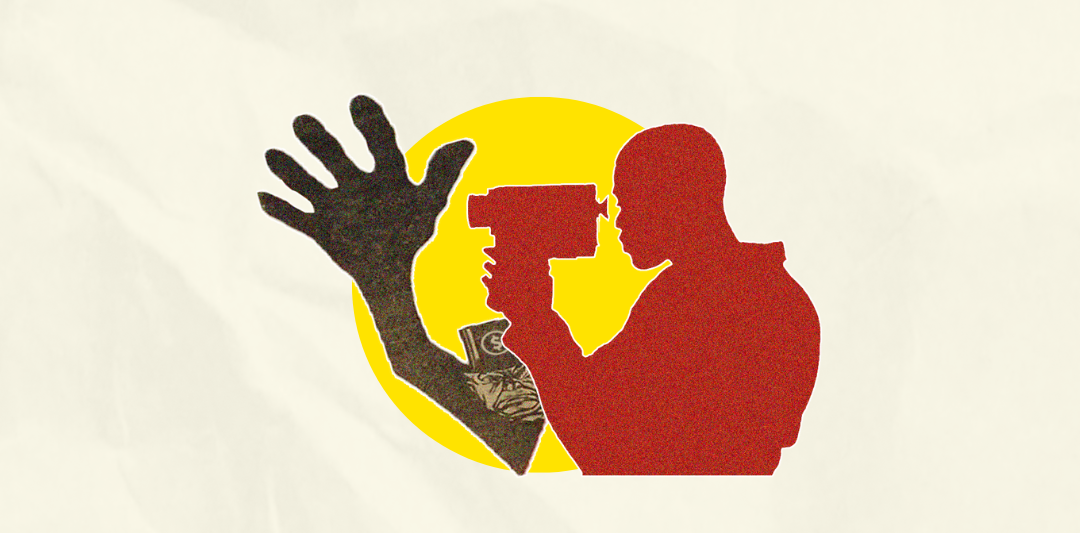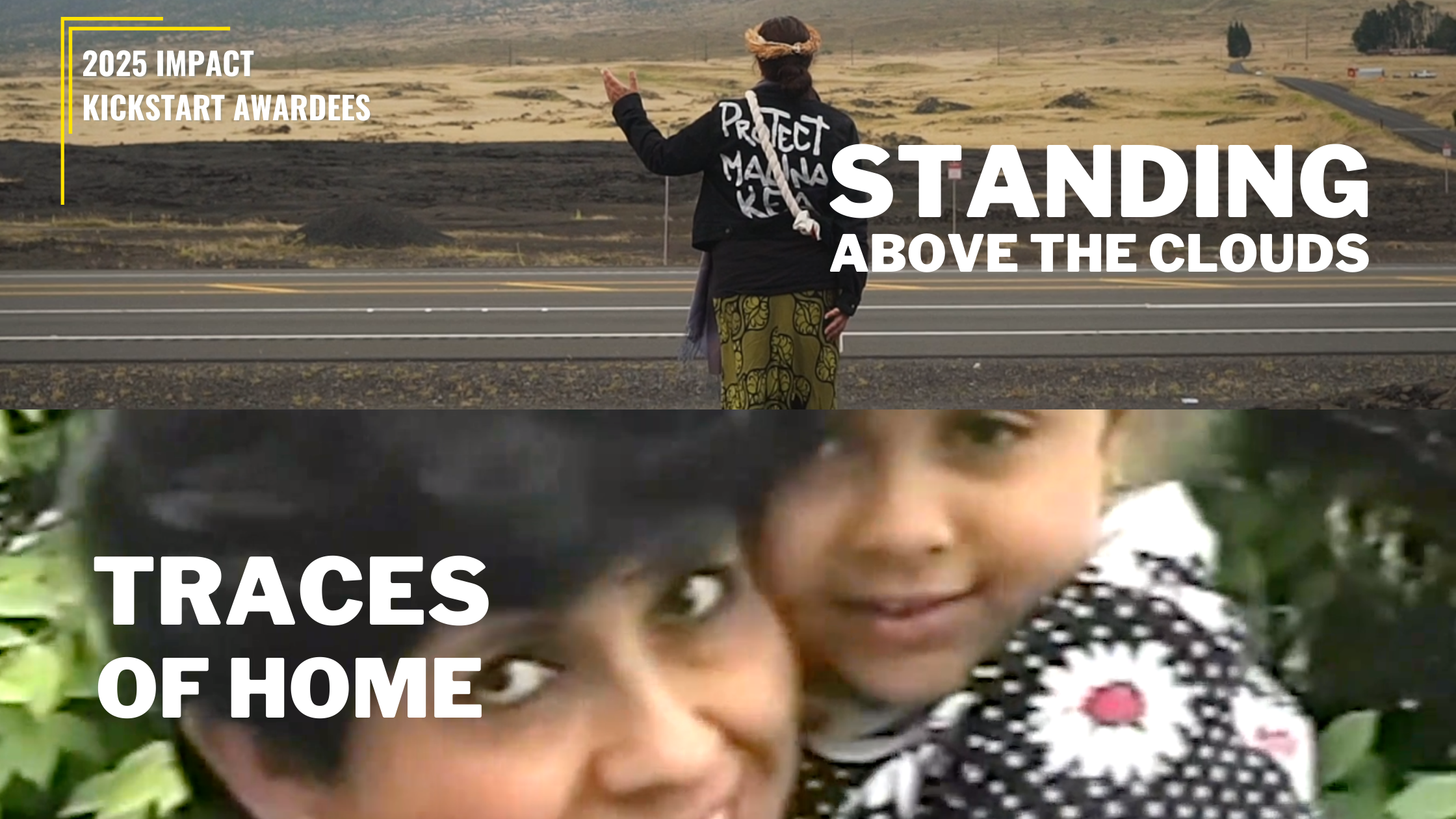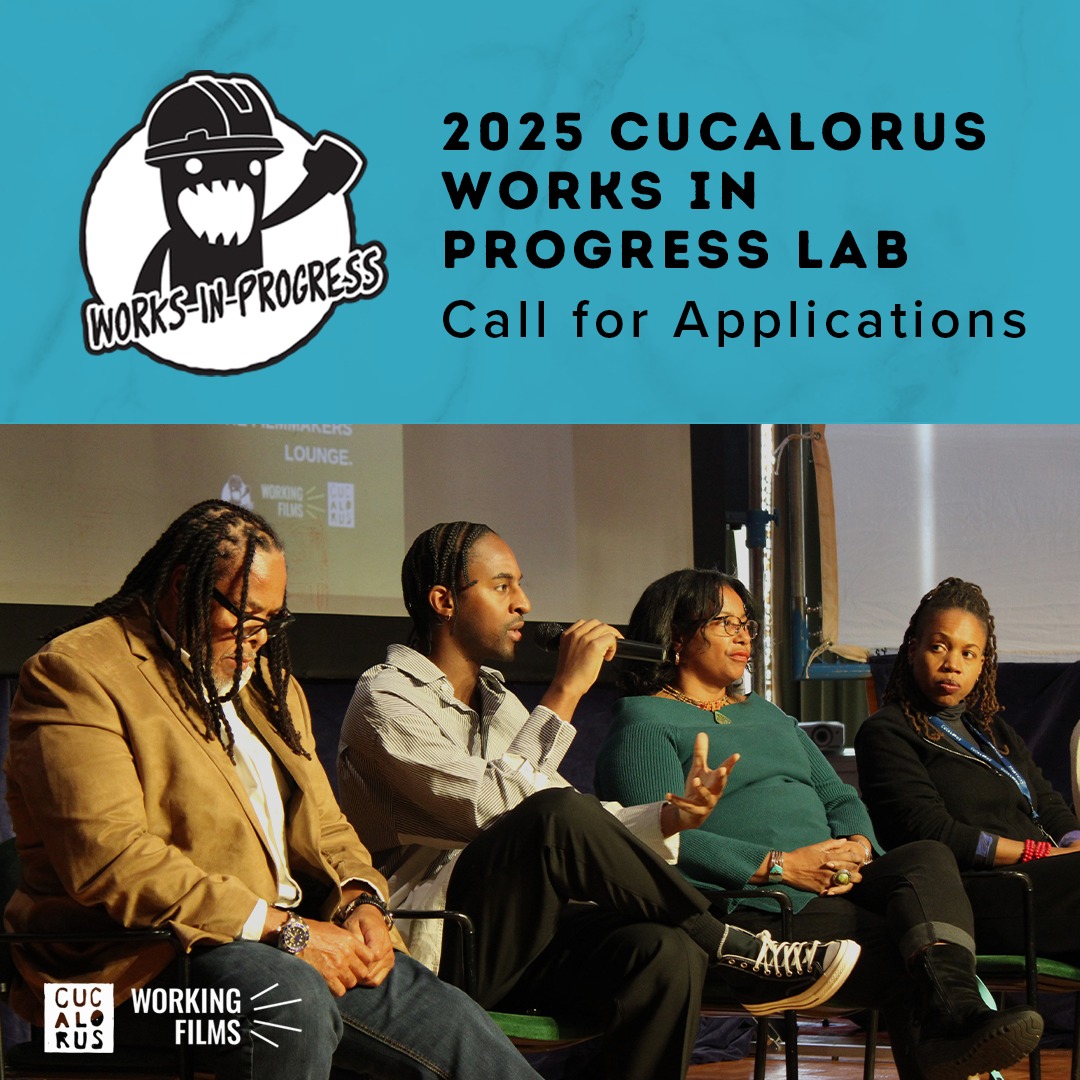As Thoughts of George Rise Up: Judith Helfand on Long-Time Mentor George Stoney
Original Post can be found at PBS.org’s POV Films Blog Page
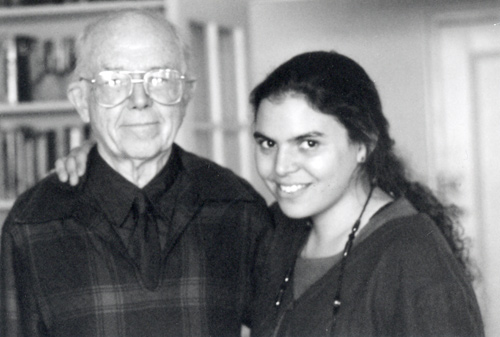
Soon after the news of George Stoney’s passing was made public, POV asked me to write a few words about him and our work together on The Uprising of ’34, which was broadcast on POV in June 1995 — a fact we were both so very proud of.
Life’s divine symmetry had me start writing this on the way to a complicated shoot that I was very uneasy about. So as I searched for words to honor George — and mark a part of his life and work I was so fortunate to share — I found myself concurrently engaging in a ritual I’ve been doing ever since he was my teacher at New York University in the mid-1980s.
Part prayer, part meditation — I’m sure I share this practice with many of his former students, mentees and colleagues.
When the complexities we all face in the field — class, race and the inextricable power of our cameras — come slamming in at me, pushing me to find the most just and decent way to react, direct, retreat, forge ahead and gather my compassionate self, and fast — I ask myself, “What would George do?”
What would he ask? What would he look for? How would he find a way, as he always did, to inject his innate respect and kindness into whatever situation he was filming? How would he navigate those complexities of class and race and the long-term impact of systemic disparity, the kind that impacts generations — no matter which side of town they live on, no matter whether they worked in the mill or not.
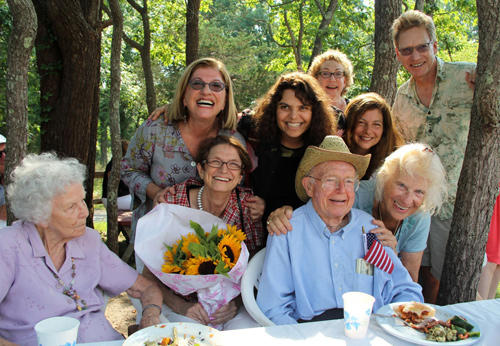
This brings me right back to his one-of-a-kind office, his warm, always-open-to-us office on the 11th floor of Tisch (aka 721 Broadway). I am seated between his Selectric typewriter, which he used regularly even after email, his vast (expertly catalogued typed onto index cards) collection of videotapes (reel-to-reel, Portapak, Beta and VHS) dating back to the beginning of community access television and his most current address book at the ready. The worn brown leather is stained with his insatiable desire to introduce everyone who is doing good work, from all over the world, to others who need that work, or more important, need each other. In George’s hands and via George’s heart, that book helped catalyze a great number of enduring relationships, friendships and compelling collaborations that make up our documentary field and beyond.
I can see him. I can even hear him.
I channel his cut-through-the-B.S.-George Stoney-of-a-question that I could always count on to go straight to my heart and set me straight so that I can bring my most authentic self to this shoot.
“Judy, ultimately being compassionate and kind is more important than getting the scene — isn’t it? It might also be the only way you get the scene.”
Did he tell me this, or did I live this lesson when we were making The Uprising of ’34? Or maybe, I just need to hear it again. Perhaps it’s all of the above.
His were the kinds of questions that slowed you down, lovingly stopped you in your tracks and then sped you up so that you found a way to do the right thing for both your subjects and your production, the movement and the movie.
Like so many before me and so many after, I learned all this from him, first in his classroom, then in his office, then at his birthday parties out east at Betty’s and especially in the field when we were making The Uprising of ’34.
George was a middle-class Southerner who didn’t take the management job in the mill in his hometown of Winston-Salem offered to him by a mill boss on his paper route. He went to [UNC] Chapel Hill to study journalism which set him on the most amazing of trajectories.
And I was the consummate outsider, from an all-white suburb in Long Island with a mother who had iconic notions about the South. “Judy, just do me a favor. Don’t talk about unions too loud or tell too many people that you’re Jewish.”
“Mom, the movie we’re making is about unions. But don’t worry, I’m with George, and he’s a Southerner.”
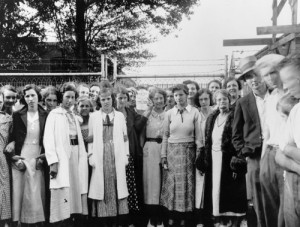
But, George’s Southerness proved to be more complicated than either of us could have imagined. Many of the retired mill workers who were still living in the mill village 50-plus years later and who had participated in the 1934 strike, were either too loyal to the mill or too frightened for their granddaughters’ mill jobs to talk with us on camera. Or they had done such a good job of making people forget that they were union, when we found them, they just had to say, “Thanks, but no.” As I would often lament to George — if only they would tell us why [on camera] they don’t want to talk — or can’t talk, then we really make that a major part of the story.
Their reticence was both frustrating and a teachable moment — especially for George. In fact, he wrote about it in an article for Southern Changes: The Journal of the Southern Regional Council in 1994, around the time the film was a very good rough cut and we were poised to complete it:
“Rejection of any kind usually leads to self-examination. “Is there something about me,” I asked myself, “that makes these people reluctant to talk?” Soon I had to accept the fact that many people, especially the women, were more at ease talking with Judy than with me. The fact that she was a non-Southern who was young and pretty and enthusiastic and who, they assumed, knew absolutely nothing about the kind of life they were describing, seemed to give them assurance. On the other hand, I was a past-middle-aged professor whose inescapable class identification as a middle-class Southerner must have reminded them of the straw boss they once feared or the shoe salesmen in town whose contemptuous remarks made half a century ago stuck in their minds and still stung.
For gaining interviews with spokespeople for the textile industry management (and they have their full say in our film), my class and regional identifications were clearly an advantage. Some of the other males seemed reassured that “this pretty young Yankee girl you’ve got there” was accompanied by a fatherly authority figure who could vouch for her.
But, by and large, Judy was taken at face value. I had to sell myself…“
As I did, our collaborators, editor Susanne Rostock and director of photography James Stoney (George’s son), found George’s personal exploration and revelations about class fascinating. For a while we strived to make that a major theme in the film. It informed our process. It informed our interview style. It was the stuff of our conversations on long country roads going to and from shoots; it was smothered, covered, diced and sliced at Waffle Houses in Georgia, Alabama, North Carolina, South Carolina and Tennessee and it was the subject of our most heated editing room arguments.
But despite our best collective efforts, blessed by George himself, his personal revelations did not wind up in The Uprising of ’34. In fact, the more that George found his voice and used it to explore the complexities of class and race, his and theirs, mine and ours, the more he was sure that if it was to be in the film, it could only be there to help frame the complexities; it could not take away from their essential story.
This process ultimately helped us make one of our most critical stylistic decisions, one that determined the tone, tenor and pace of The Uprising of ’34. We had always expected to fill the analytical holes with captivating sound-bite savvy historians and other experts. But after many years of production, we came to see that the retired mill workers, no matter which side they were on — be they retired white mill workers or the few retired black mill workers we ultimately were able to find, be they those who worked in the mill or those who worked outside, under, along and around it, be they owners and managers and their grandsons, or “loyal” anti-unionists and trade unionists, be they those whose lives had been informed by that moment of citizenship and activism or those who had tried to ensure that no one ever knew what they had done — they were the experts. And they themselves needed to speak about their history. For George, this was as much an editorial decision as it was a political statement.
Years after we had made The Uprising of ’34, when George was teaching documentary production in Ireland at the New York University’s Dublin program, I had the privilege of subbing for him and taught his documentary workshop in NYC on the Washington Square campus. This was the same class that I had taken with him at New York University when I was an undergraduate in spring 1985. This experience, a circular miracle that never failed to amaze me, led to my teaching documentary production at New York University for the next seven years. And this was when I found out how much George had taught me about teaching – perhaps the greatest gift he ever gave me.
With George in our hearts, I wrote this in conversation with filmmaker/editor David Cohen and filmmaker/professor Beverly Peterson (both of them former students of George), neither of whom I would have gotten to know, love, work closely with or have taught [David was my student in that spring 2000 documentary workshop at New York University] were it not for George Stoney, his address book and his insatiable, magnanimous desire to bring together the people he loved.
So here is to these and so many, many, many other meaningful friendships and “workships” — quietly instigated and matched by our beloved George.
I offer this context because I don’t think the act of remembering George Stoney is a solitary one. I think it is a verb done with friends. So please call the friends and comrades he introduced you to. Ask them how they, their loved ones and especially their parents are. That’s what George would do. That’s the secret sauce. I am sure of it.
Or as he told me many a time, “Nothing will replace a good kiss or a handshake.”
Long live our Stoney friendships, our Stoney collaborations, our Stoney questions and all of our beloved Stoney answers.
And as they must be saying in Brazil (a place he loved and where he was truly loved back again and again), “Viva George!”
And the work continues…
“What will you do when the lights come up? What will they, the audience, do?”
This classic George Stoney question informed the making of The Uprising of ’34 (which you can learn more about at der.org).
Will they be more bitter, more stuck, more true to the ideas and assumptions they had when they walked in? Or will they be a little more willing to look around and see who they laughed with over the past 90 minutes? Will they be able to have more compassion for the other? Will they be more willing to sit with their discomfort? Will they be able to see life through that mill worker’s eyes and heart?
This spirit, this sense of responsibility for the use of a film after you’ve made it — that was the gift of studying, working with, creating and collaborating with George on a story that was so near and dear to his North Carolina-born heart.
When they ask, “What do we do?” what will you say? We will talk about George Stoney and his belief and that making a film is only 50% of the work. And the use of it is the other 75%.
The other 75% of the work — the art, sweat and work of using a film and engaging with an audience —was the inspiration behind me and Robert West co-founding Working Films in 1999 and with it the Stoneyship internship program. George was a founding board member. Almost 12 years later, Working Films is a national leader in linking nonfiction filmmaking to cutting edge activism proudly based in North Carolina.
Documentaries by George Stoney
Here are two opportunities to spend some time with George from the work-in-progress The Happy Collaborator by Mike Hazard, a filmmaker, colleague and archivist for George Stoney.
A Point of View (via YouTube)
Propaganda (via YouTube)
And here are three films by George that you can watch online:
All My Babies (along with the trailer for his forthcoming film made with Director David Bagnell, via SnagFilms)
Palmour Street (via archive.org)
Booked for Safekeeping (via archive.org)
Many of George’s films are available from DER for both home and educational use.




